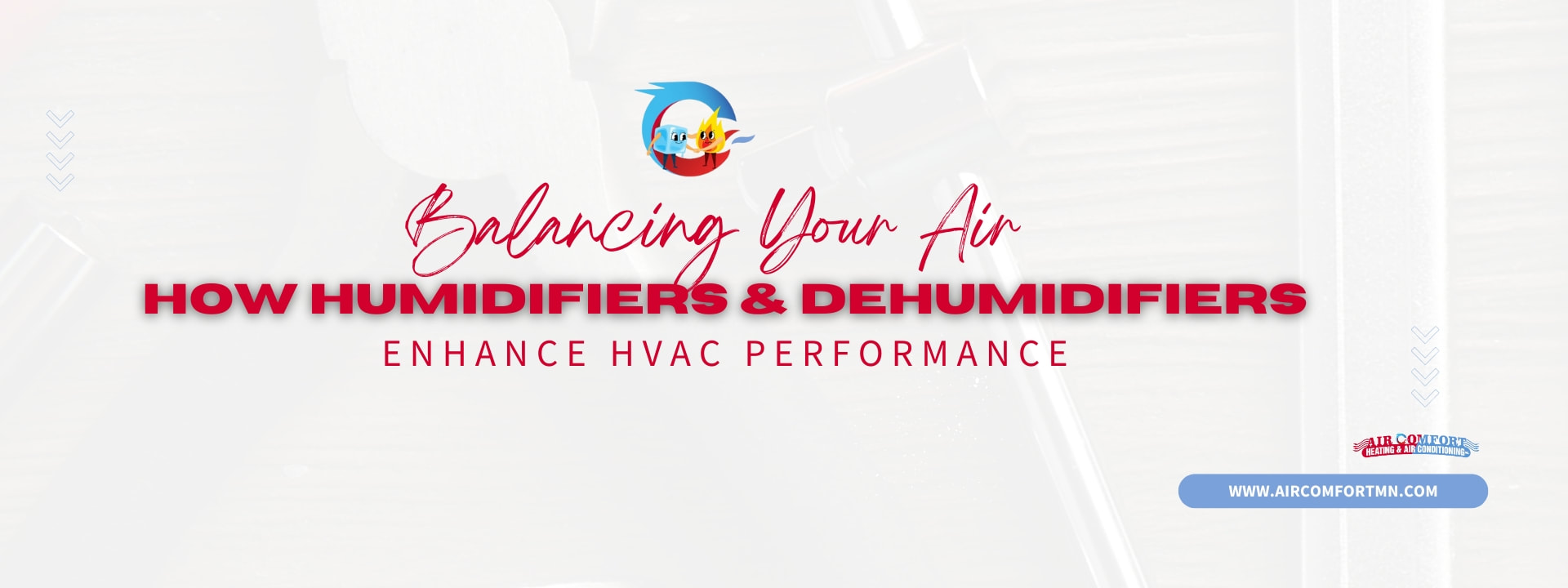|
In the era of smart homes, integrating your HVAC system with your home security setup is not just a convenience—it's a significant enhancement to your home's efficiency and safety. As technology advances, the connection between HVAC and home security systems becomes increasingly synergistic, providing homeowners with unprecedented control over their environment and security. Let’s explore how these two systems can work together to create a smarter and safer home.
Understanding the Connection The integration of HVAC and home security systems primarily revolves around the use of smart technology. Smart thermostats and home security platforms can communicate, allowing for shared control and data exchange. This connectivity means your HVAC system can play a direct role in home security measures and vice versa. For example, smart thermostats can automatically adjust based on security settings, or security systems can provide alerts if the HVAC system behaves unusually, indicating potential security issues or mechanical failures. Benefits of Integrating HVAC and Security Systems Energy Efficiency and Control: Integrated systems allow for more precise control over your home’s climate and energy use. For instance, your security system's cameras and sensors can detect when rooms are unoccupied and communicate with the HVAC system to adjust the temperature, saving energy without compromising comfort. Improved Security Monitoring: Your HVAC system can contribute to home security by helping to regulate the environment in response to security breaches. If smoke is detected, the HVAC system can automatically shut down to prevent spreading, while alerting homeowners and authorities through the security system. Enhanced Safety Features: Integration also enhances safety by monitoring the health of your HVAC system. Security systems can alert you if the HVAC system stops working, which could prevent dangerous situations like pipes freezing in winter or heat-related health issues during a summer outage. Smart Thermostats and Security Smart thermostats are pivotal in this integration. They act as the control hub, linking HVAC operation with security settings. Many smart thermostats can be controlled remotely via apps, which can also manage security cameras, alarms, and other smart devices. This unified approach ensures that homeowners can manage their home’s climate and security from anywhere in the world. Technological Solutions The technology enabling this integration includes Internet of Things (IoT) devices that allow seamless communication between different home systems. Platforms like Google Home and Amazon Alexa are often used to manage these devices under one ecosystem, providing an intuitive interface for controlling both HVAC and security systems. Installation and Setup Setting up an integrated system requires selecting compatible devices that can communicate with each other. Professional installation is recommended to ensure that the systems are properly synced and that all features are optimized. A professional can also provide advice on the best devices and setups for your specific needs. The integration of HVAC and home security systems represents a significant step forward in home automation. By connecting these systems, homeowners gain more control over their environment, enhance their home’s security, and improve energy efficiency. As smart home technology continues to evolve, the possibilities for integration will expand, making homes smarter, safer, and more connected. Interested in integrating your HVAC and home security systems for a smarter, safer home? Contact Air Comfort today.
0 Comments
Experiencing hot and cold spots in your home can be frustrating, particularly when different rooms seem to have a mind of their own temperature-wise. These temperature inconsistencies not only compromise comfort but also strain your HVAC system, leading to higher energy costs. Here’s how to address and rectify these hot and cold spots to ensure your home maintains a comfortable and even temperature throughout.
Understanding Airflow Dynamics Hot and cold spots often stem from issues in airflow dynamics within the home. Factors such as blocked air vents, poor insulation, improperly sized HVAC units, or even the layout and design of your ductwork can disrupt airflow. The first step to solving these temperature imbalances is understanding that each factor can contribute differently and may require a specific approach. Practical Tips to Resolve Hot and Cold Spots Adjust Air Vents: Sometimes the solution is as simple as adjusting your air vents. Ensure that vents are not blocked by furniture or rugs and experiment with opening or slightly closing vents in different rooms to balance the airflow. Check and Seal Ductwork: Leaky or poorly insulated ductwork can significantly contribute to uneven temperatures. Inspecting your ductwork for any leaks or blockages and sealing them can help maintain consistent airflow throughout your home. Install Window Treatments: Effective use of blinds, curtains, or shades can significantly reduce heat gain during summer and heat loss during winter, helping to stabilize room temperatures. Use Fans Strategically: Ceiling fans set to rotate clockwise can push warm air that rises back down into the room during winter, while a counter-clockwise rotation helps cool rooms more effectively in the summer. Portable fans can also be used to help distribute air more evenly throughout the space. Advanced Solutions Zoning Systems: For homes with significant temperature variances between different areas, a zoning system can be an effective solution. Zoning systems allow you to control the temperature independently in different zones or rooms of your house, which can be controlled via multiple thermostats or a single programmable thermostat. Upgrade Insulation: Enhancing the insulation in your walls, attic, and floors can stabilize your home’s internal temperatures and reduce the workload on your HVAC system, resulting in more uniform heat distribution and reduced energy consumption. Consider a Professional HVAC Assessment: Sometimes, the best approach is to bring in a professional to assess your HVAC system and home layout. They can provide tailored solutions that consider the unique aspects of your home, such as its size, orientation, and existing HVAC system capacity. Long-Term Benefits of Addressing Hot and Cold Spots Addressing hot and cold spots in your home not only improves comfort but also enhances your HVAC system’s efficiency. By ensuring that your home is properly balanced in terms of temperature, you'll enjoy lower utility bills, a reduced environmental impact, and an overall more pleasant living environment. Tackling hot and cold spots might require a bit of investigation and tweaking, but the result is a more comfortable, energy-efficient home. Whether through simple DIY fixes or more comprehensive system upgrades, addressing these issues is well worth the effort. Are you ready to resolve uneven temperatures in your home? Contact Air Comfort today Upgrading your HVAC system to a more energy-efficient model is not just good for the environment—it can also be beneficial for your wallet. Thanks to various tax credits and rebates offered by the federal government, state agencies, and local utility companies, making the switch to an energy-efficient HVAC system has never been more appealing. Here’s what you need to know about these financial incentives and how they can help you save money while boosting your home's energy efficiency.
Understanding Energy-Efficient HVAC Systems Energy-efficient HVAC systems are designed to use less energy than standard models. This not only helps reduce your home’s carbon footprint but also decreases your monthly energy bills. Systems are often rated by their Seasonal Energy Efficiency Ratio (SEER), Energy Efficiency Ratio (EER), or Annual Fuel Utilization Efficiency (AFUE) scores, with higher ratings indicating better efficiency. Federal Tax Credits for HVAC Upgrades The federal government offers tax credits for certain energy-efficient HVAC installations to encourage homeowners to upgrade their systems. For example, installing ENERGY STAR certified equipment can qualify you for these credits. The amount and availability of these credits can vary, often depending on the specific type of system installed and the year it was installed. Typically, these credits can cover a portion of the cost, including installation, making it a significant saving. State and Local Rebates Beyond federal incentives, many states and local governments offer additional rebates for energy-efficient home improvements. In Minnesota, for instance, homeowners can access various programs that provide financial incentives for upgrading to more efficient HVAC systems. These programs often vary by locality and utility company, so it’s important to check what specific incentives are available in your area. Utility Company Rebates Many utility companies also offer rebates for energy-efficient upgrades as part of their commitment to reducing overall energy consumption. These rebates can be substantial, depending on the type of system installed. Contacting your local utility company or visiting their website is the best way to find out what rebates they offer. How to Qualify for Rebates and Tax Credits To qualify for these incentives, homeowners typically need to:
Long-Term Benefits of Energy-Efficient Upgrades While the immediate financial savings from tax credits and rebates are appealing, the long-term benefits of installing an energy-efficient HVAC system extend far beyond initial cost reductions. These systems often require less maintenance and have longer lifespans than their less efficient counterparts. Additionally, the reduction in monthly utility bills can add up to significant savings over the life of the system. With the availability of federal tax credits, state and local rebates, and utility company incentives, upgrading to an energy-efficient HVAC system is more accessible than ever. These financial incentives not only help offset the initial investment cost but also promote a move towards more sustainable energy use in homes across the country. Are you ready to upgrade your HVAC system and take advantage of these savings? Contact Air Comfort today Carbon monoxide (CO) is a silent, invisible threat that can quickly turn deadly without warning. Homes with HVAC systems, while providing comfort, can unfortunately also become sources of CO if not properly maintained. This makes carbon monoxide detectors not just helpful, but essential for ensuring the safety of households. Here’s what every homeowner needs to know about the critical role of CO detectors in HVAC safety.
Understanding Carbon Monoxide Carbon monoxide is an odorless, colorless gas produced by burning materials containing carbon, such as gasoline, natural gas, oil, wood, and coal. In homes, CO is commonly emitted by heating systems and appliances that are malfunctioning or improperly vented. Inhalation of carbon monoxide can lead to carbon monoxide poisoning, whose symptoms include headache, dizziness, weakness, upset stomach, vomiting, chest pain, and confusion, and can be fatal at high levels. The Link Between HVAC Systems and CO Emission HVAC systems, especially those that involve combustion processes, such as gas furnaces, can potentially emit carbon monoxide if they are not functioning correctly. Common causes include cracked heat exchangers, improper exhaust ventilation, and blocked flues. This makes regular HVAC maintenance not just a matter of system efficiency and reliability, but of safety as well. Benefits of Carbon Monoxide Detectors Installing carbon monoxide detectors in your home can significantly enhance safety by providing early warnings of CO presence before it reaches hazardous levels. The benefits of CO detectors include:
Choosing the Right Carbon Monoxide Detector When selecting a CO detector, consider features such as battery backup, digital CO level display, and interconnectivity with other home safety devices. Placement is also critical; install CO detectors near each sleeping area in your home, on every level, and near but not inside the kitchen. Avoid placing detectors near fuel-burning appliances as they might trigger false alarms. Legal Requirements and Recommendations Many jurisdictions have specific requirements regarding carbon monoxide detectors, especially in homes with fuel-burning appliances or attached garages. These laws are designed to ensure baseline safety standards are met to protect residents from CO poisoning. Installation and Maintenance Tips Once installed, regular maintenance of CO detectors is crucial. This includes testing the detector monthly, replacing batteries annually, and replacing the detector itself according to the manufacturer's instructions, typically every 5 to 7 years. Simultaneously, ensure your HVAC system is inspected and serviced annually by a professional to prevent CO issues at their source. Carbon monoxide detectors are a crucial addition to any home with an HVAC system, particularly those that include combustion-based heating. They act as silent guardians, keeping an eye on air quality and ensuring that your home remains a safe haven. Don’t wait until it’s too late. Ensure your home is equipped with functional carbon monoxide detectors and schedule regular HVAC maintenance with Air Comfort today. Proper attic ventilation might not be the first thing you think about when assessing your home’s health, but it should be high on your priority list. Good ventilation in your attic plays a pivotal role in maintaining the structural integrity of your home, enhancing air quality, and even in reducing energy costs. Let’s explore why proper attic ventilation is essential and how it can protect and improve your home environment.
Why Attic Ventilation Matters Attic ventilation helps balance the air flow in and out of your attic, creating a system that expels hot air and draws in cooler air. This cycle is not just about comfort; it directly impacts your roof’s lifespan and your home's energy efficiency. Without adequate ventilation, attics can become overheated during summer, which can lead to damaged shingles and increased cooling costs. In winter, poor ventilation can cause moisture accumulation from the heated air rising from your home, which may lead to damaging mold and mildew growth. Signs of Poor Attic Ventilation Recognizing the signs of inadequate attic ventilation can help you address issues before they become serious. Key indicators include:
Benefits of Proper Attic Ventilation The advantages of ensuring good attic airflow are significant:
Types of Attic Ventilation Systems Several types of ventilation systems can help maintain proper airflow in your attic:
Best Practices for Attic Ventilation Achieving optimal attic ventilation involves more than just installing vents. It requires a balanced approach where the air intake and exhaust are equally matched. This can often be best achieved through a combination of soffit and ridge vents, which creates a natural flow of air through the attic. Consulting with a professional is recommended to design and install a system tailored to your specific home layout and regional climate. Professional Assessment and Installation Because every home is unique, professional assessment of your attic’s specific needs is crucial. An HVAC professional can provide insights into the best ventilation strategies for your home and ensure that any installations are done correctly. Proper attic ventilation is an integral part of home maintenance that protects your investment and improves your living environment. Ensuring that your attic is well-ventilated will help you save on energy costs, extend the lifespan of your roof, and protect your home from moisture-related damage. Is your attic properly ventilated? Don’t wait for signs of trouble. Contact Air Comfort today. The history of heating, ventilation, and air conditioning (HVAC) is not just a tale of technological advancement; it's a fascinating reflection of human ingenuity and the quest for comfort. From ancient Roman bathhouses to today's smart climate control systems, the journey of HVAC technology is a testament to how essential controlled environments have become to our daily lives. Let's explore the evolution of HVAC from its ancient roots to the sophisticated systems we rely on today.
Ancient Beginnings The concept of HVAC goes back to ancient civilizations. The Romans, renowned for their engineering prowess, developed the hypocaust system, an early form of central heating. They built a space under the floors and in the walls to circulate hot air and smoke from fires, heating public baths and wealthy homes. Far away in ancient China, ingenious inventors used manually powered fan wheels for air conditioning, and water-powered fans were developed during the Han Dynasty to cool imperial palaces. The Birth of Mechanical Cooling The real game-changer in HVAC history came with the birth of mechanical cooling in the 19th century. In 1842, Florida physician Dr. John Gorrie built an ice-making machine that used compression to make ice, which he then used to cool air for his patients. However, it was Willis Carrier who took the next significant step in 1902 by inventing the first modern air conditioning system to control humidity in a New York publishing house, improving the quality and consistency of the printed paper. Advancements in the 20th Century The 20th century witnessed rapid advancements in HVAC technology. Residential air conditioning became a symbol of modern comfort in the post-World War II economic boom. Central heating systems became common, and the development of the heat pump in the mid-20th century offered a more efficient way to heat and cool homes. By the late 20th century, HVAC systems had become more sophisticated with the introduction of technologies aimed at improving energy efficiency and reducing environmental impact. Modern HVAC Innovations Today, HVAC technology is on the cutting edge of innovation. Smart thermostats have revolutionized how we interact with our heating and cooling systems, allowing for remote control via smartphones and learning our preferences to adjust settings automatically. Green technologies and the integration of renewable energy sources like solar power are making HVAC systems more sustainable. Additionally, advancements in AI are beginning to provide unprecedented efficiency in system management by predicting maintenance needs and optimizing energy consumption. The Impact of HVAC on Society The evolution of HVAC technology has had a profound impact on society, transforming how we live, work, and play. Climate-controlled environments have become critical in medical facilities, high-tech industries, and residential buildings. They enhance productivity, protect sensitive equipment, and provide comfort in extreme climates. Future Prospects Looking ahead, the future of HVAC is poised for further transformation. Innovations in energy efficiency, the increasing use of renewable energy, and continuous improvements in smart technology will drive the next generation of HVAC systems. These advancements promise not only to reduce our carbon footprint but also to create smarter, more adaptive living and working environments. From ancient innovations to modern technologies, the history of HVAC is a clear indicator of its crucial role in our lives. As we continue to develop and integrate new technologies, HVAC systems will become even more integral to creating sustainable, efficient, and comfortable indoor environments. Interested in upgrading to the latest HVAC technology or curious about how you can make your home or office more energy-efficient? Contact Air Comfort today. When it comes to maintaining a comfortable and healthy home environment, ensuring your HVAC system is in top shape is crucial. One of the most effective ways to achieve this is through an HVAC maintenance contract. These contracts not only help prevent unexpected repairs and breakdowns but also ensure your system operates efficiently year-round. Here’s why securing a maintenance contract for your HVAC system is a wise decision for any homeowner.
What is an HVAC Maintenance Contract? An HVAC maintenance contract is an agreement between a homeowner and an HVAC service provider that includes scheduled inspections, maintenance, and repairs of your heating, ventilation, and air conditioning system. These contracts are designed to keep your system running efficiently by preemptively addressing potential issues through regular check-ups and maintenance tasks. Benefits of HVAC Maintenance Contracts Cost Savings: Regular maintenance under these contracts can prevent costly emergency repairs and system inefficiencies that lead to high energy bills. By keeping your HVAC system in optimal condition, you also extend its lifespan, saving money on early replacement costs. Extended Equipment Life: Routine maintenance ensures that all parts of your HVAC system are functioning correctly and efficiently. Regular check-ups can identify wear and tear early, allowing for repairs before serious problems develop, thereby extending the life of your system. Improved System Performance: A well-maintained HVAC system provides consistent comfort and air quality. Regular cleaning of filters and components, along with adjustments and minor repairs, ensures that your system delivers optimal performance, keeping your home comfortable in all seasons. Priority Service: One of the top perks of having a maintenance contract is often priority service. Contract holders typically receive faster response times, especially during high-demand seasons. This means if your system encounters an issue, you’ll be at the top of the list for repairs. Common Features of Maintenance Contracts - Most HVAC maintenance contracts offer:
Considerations When Choosing a Contract When selecting an HVAC maintenance contract, it’s essential to consider the reputation and reliability of the service provider. Look for companies with certified technicians and a track record of high-quality service. Understand what each contract covers and what it doesn’t, and consider whether the cost of the contract aligns with the benefits it provides. Real-Life Examples Consider a scenario where during a routine maintenance check, a technician discovers a small issue that, left unchecked, could have led to a significant system failure. Thanks to the early detection under a maintenance contract, the problem is fixed at a minimal cost, avoiding a major, costly breakdown during the peak of summer. An HVAC maintenance contract is a small investment that pays big dividends in peace of mind, comfort, and financial savings. By ensuring regular care and priority service, these contracts keep your HVAC system running efficiently and effectively, prolonging its lifespan and preventing costly emergency repairs. Ready to protect your home comfort system with an HVAC maintenance contract? Contact Air Comfort today. When it comes to home heating and cooling, there's no shortage of advice floating around. Unfortunately, much of it is based on myths that can lead to inefficient energy use and higher costs. Let's set the record straight on some of the most common myths about home HVAC systems.
Myth 1: Bigger HVAC Units Are Always Better Many believe that a larger HVAC unit will provide better performance. However, when it comes to HVAC systems, bigger is not always better. An oversized unit not only costs more upfront but also cycles on and off more frequently, which can reduce its efficiency, increase wear and tear, and lead to uncomfortable temperature fluctuations in your home. Proper sizing of your HVAC system is crucial for maximum efficiency and comfort. Myth 2: Setting Thermostat Higher or Lower Heats or Cools Faster It's a common misconception that cranking up the thermostat will heat your home faster or lowering it drastically will cool it quicker. In reality, HVAC systems work at a constant rate. Setting the thermostat to extreme temperatures won't speed up the heating or cooling process; it will only make your unit work longer to reach the set temperature, wasting energy. Myth 3: Closing Vents in Unused Rooms Saves Energy Many people think that closing vents in unused rooms will reduce their energy consumption. However, modern HVAC systems are designed to distribute air evenly throughout the house. Closing vents can actually create pressure imbalances, leading to decreased efficiency and even damage to your HVAC system over time. Myth 4: Ceiling Fans Reduce Room Temperature Ceiling fans do not lower room temperature. Instead, they circulate air within a room, creating a wind chill effect that makes the space feel cooler. Therefore, running a ceiling fan in an unoccupied room is simply wasting energy. Fans should only be used in rooms with people in them. Myth 5: Annual Maintenance Isn’t Necessary Skipping annual maintenance to save money is like skipping oil changes to save on car maintenance—it’s a false economy. Regular HVAC maintenance is essential to ensure efficient operation, prevent unexpected breakdowns, and extend the life of your system. Technicians can catch issues before they become costly problems. Myth 6: You Don’t Need to Change Filters Regularly The air filter is a crucial component of your HVAC system, protecting it from dust and other particles. Failing to change the air filter regularly can lead to a host of problems, including reduced air flow, higher energy consumption, and even system failures. Filters should be checked monthly and changed at least every three months. Understanding the truth behind these myths can help you better manage your home's heating and cooling system, leading to improved comfort, lower energy bills, and a longer lifespan for your HVAC equipment. By taking the right steps, you can ensure your system is running as efficiently as possible. Think your HVAC system might be due for a check-up, or have questions about optimizing your home climate? Contact Air Comfort today. Maintaining the ideal humidity level in your home isn't just about comfort—it can impact your health, the durability of your home furnishings, and even the efficiency of your HVAC system. That's where humidifiers and dehumidifiers come into play. These tools are crucial for creating a comfortable living environment, especially in extreme weather conditions. Let's delve into how these devices work with your HVAC system to enhance your home's atmosphere and why they're a worthwhile addition to any home.
What are Humidifiers and Dehumidifiers? Humidifiers are devices designed to add moisture to the air, which is particularly beneficial in dry climates or during cold winter months when heating systems tend to dry out the air inside your home. By maintaining the moisture content in the air, humidifiers help prevent problems associated with dry air, such as dry skin, irritation of the respiratory tract, and increased static electricity. Dehumidifiers, on the other hand, remove excess moisture from the air, which can be especially useful in damp climates or during hot, humid summers. Excess humidity can make your home feel stuffy and can contribute to the growth of mold and mildew. Dehumidifiers help maintain a comfortable and healthy environment by controlling moisture levels. How Humidifiers Work with Your HVAC When integrated into your HVAC system, humidifiers add moisture directly into the airflow, distributing it evenly throughout your home. This integration ensures that your living space maintains optimal humidity levels automatically, without the need for standalone units in various rooms. The result is consistent air quality that enhances comfort and preserves the health of everyone in the home. How Dehumidifiers Work with Your HVAC Similarly, dehumidifiers can be integrated into your HVAC system to remove moisture from the air before it is circulated through your home. This is particularly important in areas prone to high humidity, as it prevents the overworking of your air conditioner, which can occur when it has to cool both the air and condense the moisture. This not only saves on energy costs but also reduces wear and tear on the system. Benefits of Humidity ControlProper humidity control offers several benefits:
Choosing the Right System for Your Home Selecting the right humidifier or dehumidifier depends on several factors, including the size of your home, the existing HVAC system, and your specific climate needs. It’s important to consult with HVAC professionals who can assess your home and recommend the best humidity control solutions that are compatible with your system. Installation and Maintenance Proper installation and regular maintenance of humidifiers and dehumidifiers are key to ensuring they work effectively and last long. This includes regular cleaning and replacement of filters to prevent the buildup of bacteria and mold. Whether you're combating dry winter air or sticky summer humidity, integrating a humidifier or dehumidifier with your HVAC system can significantly improve the air quality and comfort of your home. With the right setup, you can enjoy a healthier, more comfortable living environment and even save on your energy bills. Ready to balance the air in your home? Contact Air Comfort today. As sustainability becomes more crucial in our daily lives, homeowners are increasingly turning to solar technology to power their homes. Solar HVAC systems, which use solar energy to heat and cool homes, are gaining popularity for their eco-friendliness and potential cost savings. However, like any technology, they come with both advantages and challenges. Let's delve into the pros and cons of solar HVAC systems to help you determine if they're the right fit for your home.
What is a Solar HVAC System? A solar HVAC system integrates solar panels with traditional heating and cooling mechanisms. The solar panels collect solar energy and convert it into electrical power, which then operates the HVAC system. This setup can significantly reduce reliance on grid electricity, tapping into the abundant and free energy provided by the sun. Pros of Solar HVAC Systems Energy Savings: One of the most appealing aspects of solar HVAC systems is the potential for substantial energy savings. By using solar power, these systems can reduce your electricity bills, especially during peak usage times. Environmental Impact: Solar HVAC systems contribute to a lower carbon footprint. Using renewable solar energy instead of fossil fuels to power your HVAC system helps reduce greenhouse gas emissions, aligning with global efforts to combat climate change. Increased Home Value: Homes equipped with solar energy systems often see an increase in property value. Buyers are increasingly looking for homes with sustainable features that promise long-term savings. Long-Term Savings: Although the initial investment might be high, the long-term savings from reduced energy bills can offset the upfront costs. Additionally, many governments offer incentives for installing solar energy systems, making it a financially viable option over time. Cons of Solar HVAC Systems High Initial Investment: The major barrier for many homeowners is the high initial cost of purchasing and installing solar panels and integrating them with an HVAC system. Dependence on Weather: The efficiency of solar HVAC systems heavily depends on sunlight availability. In areas with less sunny weather or during periods with shorter daylight hours, the system's efficiency might decrease, requiring reliance on grid electricity. Maintenance: Solar panels and the additional components of a solar HVAC system can require maintenance more frequently than traditional systems. This includes keeping panels clean and free of debris to maintain optimal performance. Space Requirements: Installing a sufficient number of solar panels to effectively power an HVAC system requires adequate roof space. Homes with limited or shaded roof areas might face challenges in installing a solar HVAC system. Considerations Before Installation Before deciding to install a solar HVAC system, consider your local climate, the orientation and condition of your roof, and your current energy needs. It’s also beneficial to consult with a professional to analyze your home’s suitability for a solar HVAC system and to understand the potential return on investment. Solar HVAC systems offer a promising alternative for those looking to reduce their environmental impact and energy costs. While they require a significant initial investment and are dependent on geographical and environmental factors, the long-term benefits can be substantial. If you’re exploring ways to make your home more sustainable, a solar HVAC system could be a step in the right direction. Interested in learning more about solar HVAC systems or considering an installation? Contact Air Comfort today. |
AuthorVarious. Archives
May 2024
Categories |
CALL NOW: 763-753-6623
Privacy Policy l Cookie Policy l Conditions of Use l Notice and Take Down Policy l Website Accessibility Policy
© 2024 The content on this website is owned by us and our licensors. Do not copy any content (including images) without our consent.
Website managed by Go Savvy Social
Privacy Policy l Cookie Policy l Conditions of Use l Notice and Take Down Policy l Website Accessibility Policy
© 2024 The content on this website is owned by us and our licensors. Do not copy any content (including images) without our consent.
Website managed by Go Savvy Social











 RSS Feed
RSS Feed